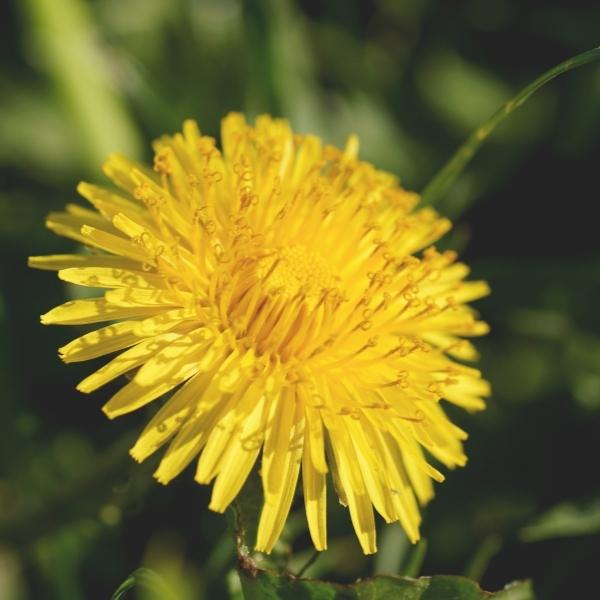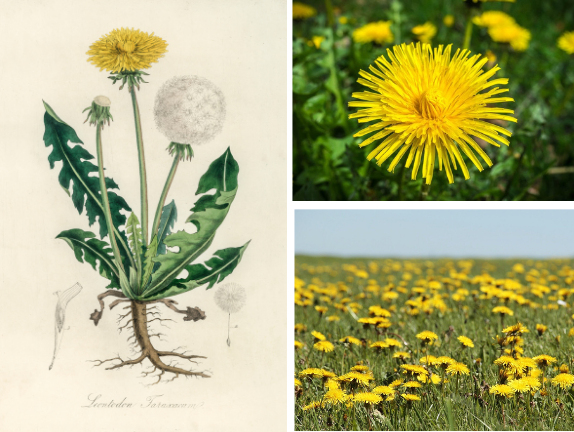
Dandelion
Share
Name: Dandelion
Latin name: Taraxacum officinale
Family: Asteraceae
Parts Used: Entire plant
Taste: Bitter, slightly sweet, slightly salty (leaf)
Energetics: Drying, cooling
Key actions: Hepatic, cholagogue, bitter tonic, diuretic, alterative
Precautions/Contraindications:
Avoid with known allergy to Asteraceae family.
Latin Name: Taraxacum officinale
Herb Class/Action: Alterative, Hepatic, Cholagogue, Bitter Tonic
Parts Used: Entire plant: leaves, flowers, roots, sap
Flavors: Root: bitter, sweet, earthen, salty | Leaf: bitter, sweet, salty
Energetics: Drying and cooling
Traditional Benefits: Digestive support, supports natural elimination processes, liver support, microbiome support, yin support, pms support, skin support
Too often dubbed a weed by society, Dandelion needs to get itself a better PR team. Despite its bad rap, Dandelion supports our detoxification pathways from its leaves to its roots.*
Dandelion is the definition of “if there’s a will, there’s a way.” Originating in Eurasia, this flowering herb eventually made its way across the globe—popping up in lawns and fields everywhere. In the wild, dandelions signify cleansing and balancing, often sprouting up along disturbed soils, within ecosystems that need some extra love. They help bring nutrients from deep within the soil to the surface to help support other plants, bees, and wildlife, encouraging diversity and health for all other plants and creatures around them. They exist to help clean up, regulate, and renew the soil in which they grow.
Despite society’s best efforts to get rid of dandelions, they still thrive and somehow make things around them better. Since herbs have a way of hinting at their benefits to us by the way they grow and exist in the wild, the resilience and willpower of this plant should tell you a lot about what it has to offer us. Just like in nature, dandelion helps restore, strengthen, and support resilience within the body, even in the face of our very own environmental pollutants that affect our ‘soil’ or foundation.*

Dandelion naturally contains vitamins A, B complex, and C, as well as iron, potassium, and zinc. Dandelion root is most commonly used in herbalism due to its incredible ability to support our liver detoxification pathways, and it can be consumed as an encapsulated supplement, tincture, or made into a tea or coffee. Less common, its greens (stems/leaves) can even be added to a salad and eaten raw. Dandelion leaf tea supports kidney health for full circle elimination pathway support. William LeSassier is quoted saying, “The root is a liver tonic, the leaf brings the kidney in relationship to the liver, and the flower brings the heart in relationship to the liver.”
So, what exactly does Dandelion root do? As a drying and cooling herb, Dandelion addresses “damp” and “hot” liver stagnation, and supports our detoxification processes. More specifically, it helps support healthy liver function, aids kidney and urinary tract health, and can help soothe and calm occasional stomach upset. In traditional Chinese herbalism and European herbalism, Dandelion helps support the liver and gallbladder, stimulates digestion, relaxes the excretory system, and provides microbiome support.*
“Dandelion don’t tell no lies, Dandelion will make you wise.” – The Rollin’ Stones



